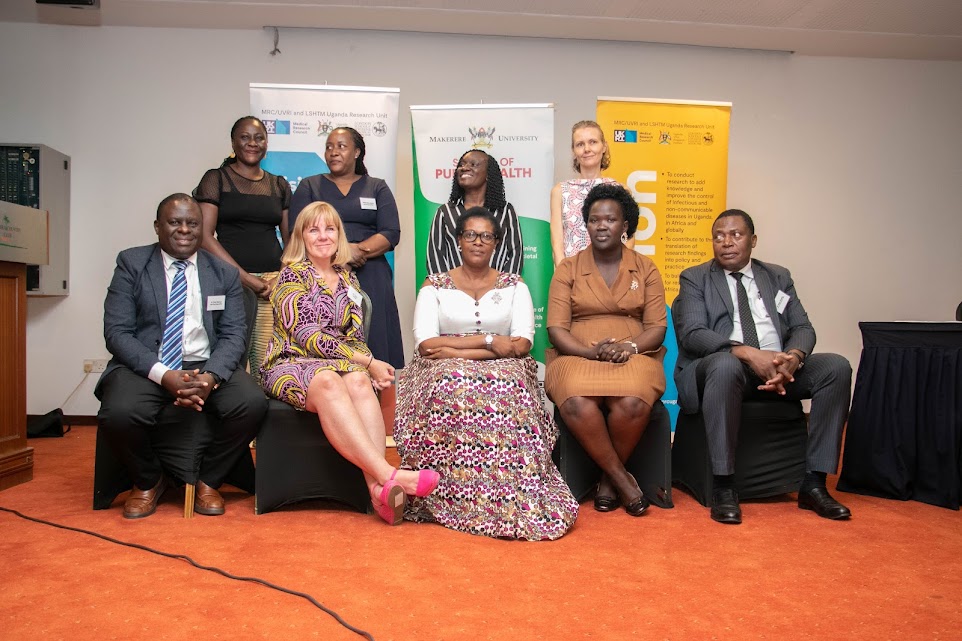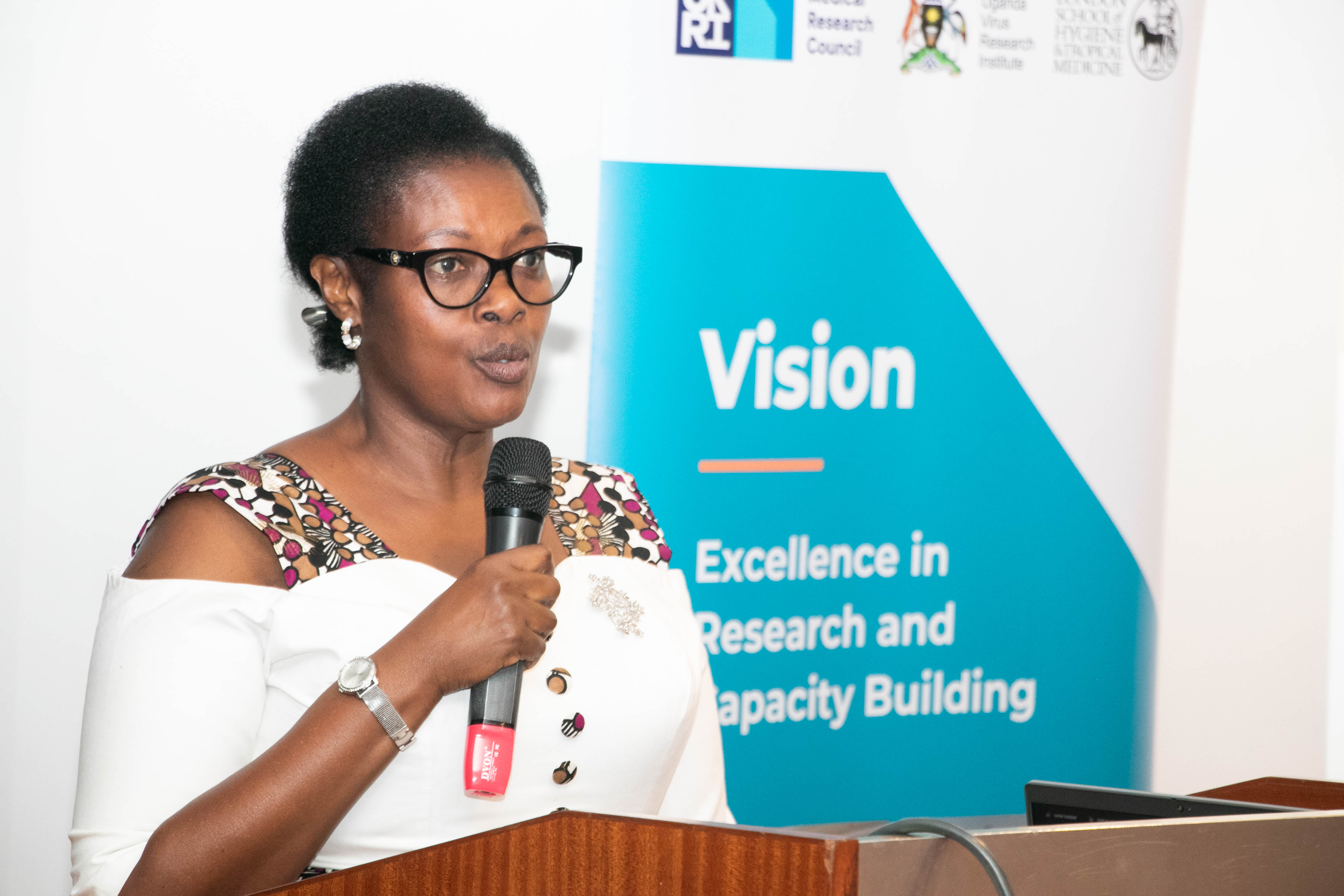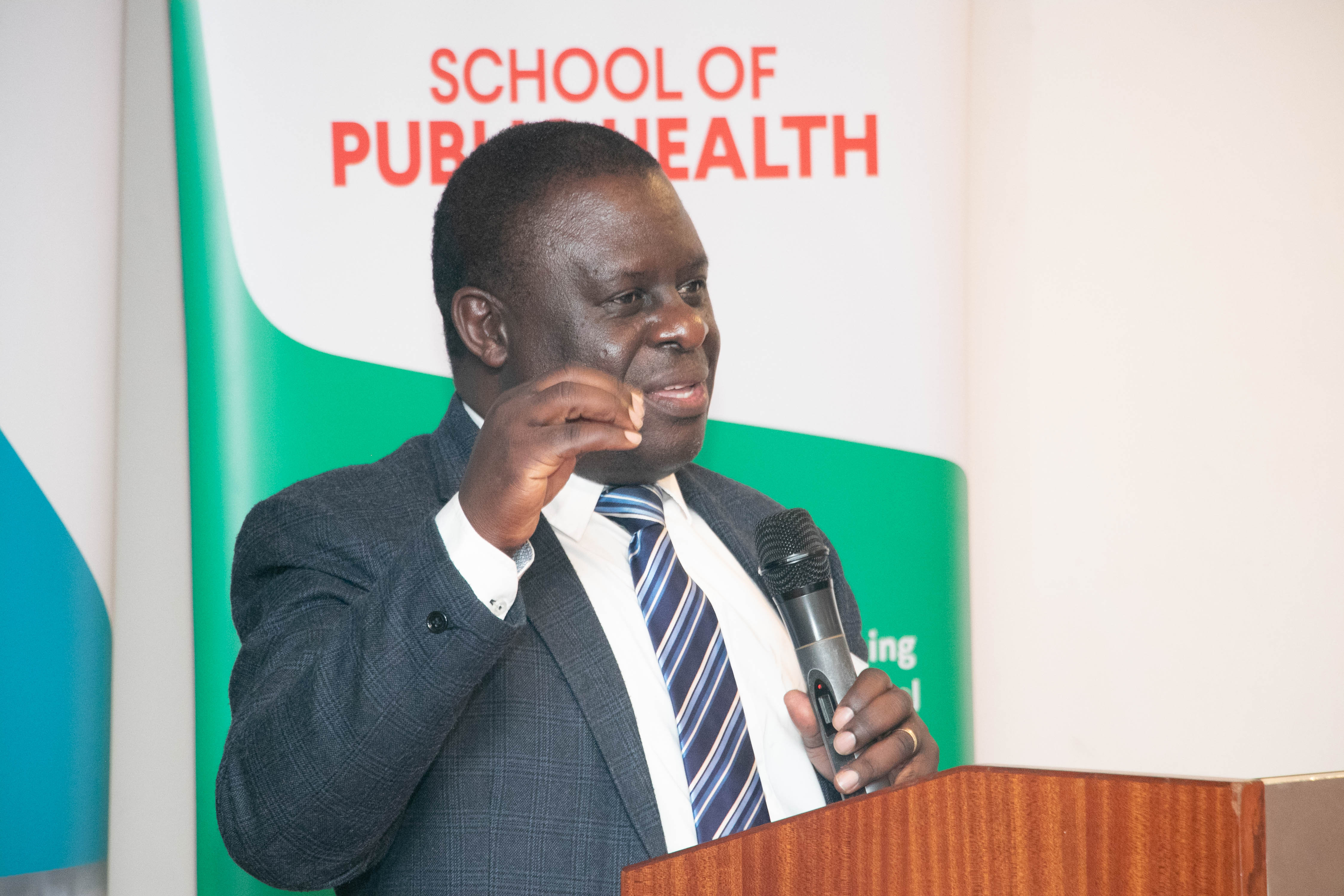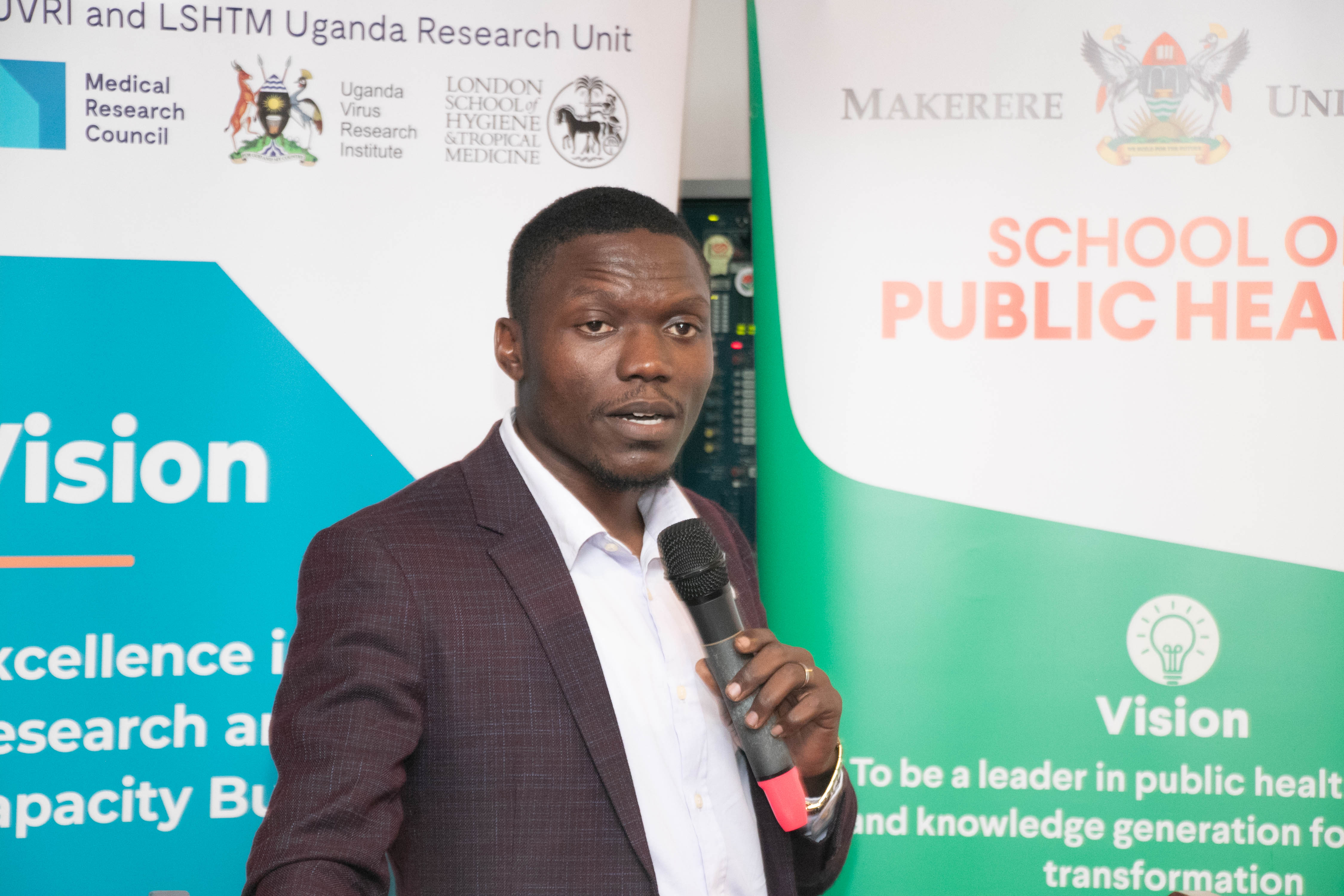
By Okeya John
Uganda faces the daunting task of reducing newborn deaths. The challenge emerges as one of the key highlights from the recent Accelerating Newborn Survival and Thrival in Uganda: High-level Round Table Discussion on Newborn Health, organized by the Ministry of Health and partners at Kabira Country Club in Kampala, between 12th - 13th June 2024.
The meeting brought together partners to review new evidence and the investment required to accelerate progress for neonatal survival in Uganda, as noted by Dr. Richard Mugahi, the Asst. Commissioner, Reproductive Health, Ministry of Health (MoH). Targeted towards meeting the UN Sustainable Development Goal (SDG) 3.2: to lower newborn mortality to at least 12 per 1000 live births by 2030, currently at 22 for Uganda.

It also featured the launch of the 2023 Situation Analysis of the National Newborn Health in Uganda - a survey assessing the gaps and current status, the discussions on the OMWANA trial's impact on neonatal care, and the Investment Case for Small and Sick Newborn Care, with an overview on the potential to meet the SDG 3.2 targets and the exploration of plans to increase investment in functional newborn care units in all districts in Uganda, including kangaroo mother care and respiratory support for preterm infants.
In her address, Hon. Margaret Muhanga, the State Minister for Primary Health Care at Uganda’s Ministry of Health said as the gathering discusses key issues affecting newborns and lays a foundation for strategic planning and rethinking newborn survival in Uganda, the group must reflect on strategies for prevention through community engagement.
“We have worked with our partners from Makerere University School of Public Health, Medical Research Council, and London School of Hygiene and Tropical Medicine to conduct a national newborn situation analysis. We have also developed the newborn investment plan, for now, we can plan for our newborns although we need to focus on providing an in-depth examination of the causes and current situation in our health centres,” the Minister noted.

The Minister observed that from the analysis, higher health facilities were registering more deaths than lower facilities, a phenomenon she said requires interrogating. She noted that the newborn situation analysis serves to provide the country with an in-depth examination of the current status of newborn health for urgent intervention, highlighting that the analysis was critical in highlighting key areas of progress and challenges that must be addressed.
Alongside this, she said, the newborn investment case presents a strategic approach and financial blueprint aimed at mobilizing resources and gaining investments to improve newborn health outcomes, focused on scaling up newborn care and survival, and critical investments in human resources and infrastructure.
“The Ministry of Health has been working with partners over the years to implement and scale-up interventions for newborn survival, including capacity building for human resources. We are grateful for setting up the functionalization of the neonatal units. There's also a need for more targeted investment in key areas of the infrastructure for the newborn kids, human resources including neonatal, nursing and improving staffing levels at our health facilities to care for just the newborn babies,” Hon. Muhanga noted.
Dr. Peter Waiswa, a health systems researcher focusing on newborn health and development and maternal-newborn-child health services and also the Team Lead for Makerere University Centre of Excellence for Maternal and Newborn Health, presented the Situation Analysis of National Newborn Health in Uganda - 2023 Update, painting a stark image that provoked reflection on the sobering reality of the current state of newborn health in Uganda.

According to Dr. Waiswa, the United Nations estimates that each year, Uganda loses over 62,000 lives around the time of birth, with 1.714 million babies born annually and 4,695 per day. Of these deaths, 4,800 are women who die during pregnancy, childbirth, or within 42 days of delivery, usually due to complications relating to pregnancy or its management.
Again, at least 26,000 others of the estimate, die of stillbirth, which is regarded as the death of a baby in the womb at or after 20 weeks of pregnancy. Still, a whopping 32,000 are neonatal deaths: which are deaths of a newborn within the first 28 days of life - often occasioned by complications relating to prematurity, birth defects, infections, or even birth-related conditions. These, like many others, are preventable deaths.
The situation analysis was conducted by the Ministry of Health, together with Makerere University School of Public Health based Centre of Excellence for Maternal, Newborn and Child Health, National Planning Authority, Medical Research Council, London School of Hygiene and Tropical Medicine, Exemplars in Global Health, The ELMA Philanthropies, UNICEF, FHI360 and Maternal and Child Health and Nutrition Activity.
Findings from the situation analysis show that over the years, Uganda has made strides in newborn health and care, although the country is yet to realize its 2020 joint targets for better care, which aims at 80 per cent babies and mothers receiving postnatal care, and 80 per cent districts having at least one WHO-recommended level II newborn care unit.
Prof. Joy Lawn, a Ugandan-born British paediatrician and perinatal epidemiologist with over 30 years of remarkable work championing newborn care, research, and policy worldwide, delivered a moving and heartfelt testimony.

“I was born in a hospital in Karamoja and nearly died at birth, but I survived because people fought for my mother and me. Here in Uganda, we can change this,” Prof. Joy Lawn, a newborn health expert and researcher at the London School of Hygiene & Tropical Medicine, said with deep emotion, during the high-level round table discussion on newborn health.
She noted that Uganda is behind in meeting its SDG commitments on neonatal care and health by 2030, emphasizing the need for the country to move twice as fast. One critical issue, she pointed out, is the rapid population increase and unmet need for family planning, which necessitates building twice the number of schools and hospitals just to keep still.
Currently, nearly 90 per cent of births occur in hospitals in Uganda, something Prof. Lawn commended as a great achievement, although the country still faces significant challenges in quality care essential for reducing stillbirths and saving newborns and mothers. Uganda also grapples with high neonatal mortality rates, insufficient hospital facilities, inadequate access to family planning, and a lack of trained healthcare staff and essential medical devices.
The country’s neonatal mortality rate, which is the number of neonatal deaths within the first 28 days of life, measured per 1,000 live births in a year, stands at 22. The goal is to reduce this to 19 by 2025, to meet Uganda’s National Development Plan III targets and 12 by 2030, to meet Uganda’s joint SDG 3.2 targets.
The situation analysis survey notes that Uganda needs significant investments, in addition to adopting WHO recommendations like the kangaroo mother care for preterm infants, as an important intervention for small and sick newborns in communities and health facilities.
In the latest UBOS 2022 Uganda Demographic and Health Survey (UDHS), neonatal deaths remain unacceptably high. Persistent regional variations also exist, the highest being in West Nile, at 34 deaths per 1000 live births, and the lowest in the Karamoja, at seven deaths per 1000 live births, as found in the updated situation analysis.
“Based on the findings, birth asphyxia (lack of oxygen) was the leading cause of newborn deaths at 60 per cent, followed by prematurity (a baby born earlier than the normal 40-week pregnancy period) and related complications at 23 per cent and neonatal sepsis (severe infections for newborns) at seven per cent.” The situation analysis reports.
According to the report, birth asphyxia—a condition where a newborn doesn't get enough oxygen before, during, or immediately after birth, potentially causing brain damage and other serious complications—is the leading cause of newborn deaths in Uganda. This condition is preventable, so the high number of deaths from it highlights problems with the care given during birth, especially in reviving newborns who are not breathing properly.
Still, some regions have shown notable progress while others continue to lag. Neonatal mortality in Busoga has remained relatively high, with no signs of change, suggesting challenges in healthcare delivery. In Kampala, a reduction from 32 deaths per 1000 in 2016 to 19 deaths per 1000 in 2022 was noted. West Nile experienced a setback with an increase in neonatal mortality rates from 28 deaths per 1,000 live births in 2016 to 34 deaths in 2022.
One of the key findings of the report is the alarmingly low rate of male involvement in maternal health, with only about 36.8 percent of pregnant women accompanied by their male partners for antenatal care. This lack of male participation found in the survey is a significant barrier to comprehensive maternal and newborn healthcare, especially concerning decision-making and support by male partners during critical stages.

The regional disparities in maternal and newborn healthcare exacerbate the challenges, with regions like Ankole and Bugisu exhibiting relatively higher levels of male involvement and newborn care practices compared to areas like Teso, Acholi and Lango. These variations emphasise the need for targeted interventions and equitable access to quality healthcare services across all regions in Uganda.
Moreover, the adoption of optimal essential newborn care practices stands at a mere 15 per cent countrywide, indicating a substantial gap in knowledge and practice regarding essential newborn care. Specifically, figures reveal that optimal cord care practices are at 45 per cent, optimal thermal care is at 27 per cent, and optimal breastfeeding practices are at 69 per cent. These figures from the situation analysis report show the urgent need for comprehensive education and support programs targeting mothers and caregivers.
In response to these challenges, the report outlines key recommendations aimed at addressing the root causes of newborn mortality in Uganda. Efforts to reduce teenage pregnancy and improve family planning awareness and access are highlighted as crucial strategies. Strengthening supply chains for contraceptive commodities and leveraging community health workers are proposed as effective means to achieve these goals.
Furthermore, enhancing health service uptake, particularly in regions with lower coverage rates, is identified as imperative. Prioritizing quality antenatal care and essential newborn care services, especially in underserved regions, is emphasized as a vital step towards improving maternal and newborn health outcomes.
Health facility readiness emerges as a critical focus area, with recommendations to scale up small and sick newborn care at national and regional referral hospitals. Implementing quality standards for newborn care and infection prevention and control are identified as essential components in ensuring better health outcomes for mothers and babies.
At the community level, developing comprehensive care guidelines and standards for newborns, coupled with an aggressive engagement and education strategy for community members, especially in hard-to-reach areas, is deemed essential.
The report also underscores the importance of reviewing and strengthening human resources for newborn care, developing evidence-based policies, fostering data-informed decision-making, enhancing partner coordination, and prioritizing implementation research in healthcare programming.
The findings serve as a clarion call for urgent action and collaboration among stakeholders to address the critical issue of newborn mortality in Uganda, whose recommendations offer the chance for the country to make significant strides towards achieving SDG targets and ensuring equitable access to quality maternal and newborn healthcare services.

According to the research on the investment case for national scale-up of small and sick newborn care in Uganda, the country needs an investment of approximately $84 million (UGX 312.5 billion) in scaling up care for small and sick newborns to achieve significant reductions in newborn mortality, with a return of $9-$11 (about UGX 40,931) for every dollar spent, primarily driven by human resource costs.
For Prof. Lawn, neonatal care isn't charity but an investment in Uganda's future. She advocated for a comprehensive approach, including proper facilities, trained staff, and efficient device management, arguing that through this, Uganda can significantly reduce newborn mortality rates and improve health outcomes for its youngest citizens.

